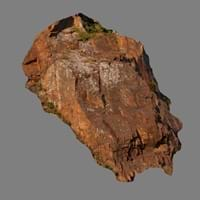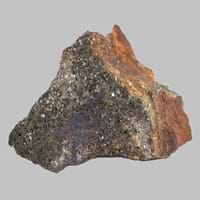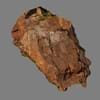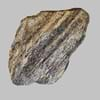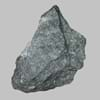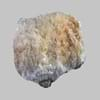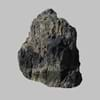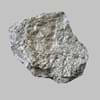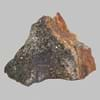Granulite and Hornfels
Definition
Definition
Granulite is fine to medium grained metamorphic rock with a granular of polygonal crystals.
Hornfels is a metamorphic rock formed by the contact between mudstone or other clay rich rock, and a hot igneous body, and represents a heat altered equivalent of the original rock
History
Origin
Central Europe
New Zealand
Discoverer
Unknown
Unknown
Etymology
From Latin granulum, a little grain or fine grained
From German which means hornstone
Class
Metamorphic Rocks
Metamorphic Rocks
Sub-Class
Durable Rock, Hard Rock
Durable Rock, Soft Rock
Family
Group
Not Applicable
Not Applicable
Other Categories
Coarse Grained Rock, Medium Grained Rock, Opaque Rock
Fine Grained Rock, Opaque Rock
Texture
Texture
Granoblastic
Granular, Platy
Color
Black, Brown
Brown, Dark Greenish - Grey, Green, Reddish Brown
Maintenance
Less
Less
Durability
Durable
Durable
Water Resistant
Yes
Yes
Scratch Resistant
Yes
No
Stain Resistant
Yes
No
Wind Resistant
No
No
Acid Resistant
No
No
Appearance
Veined or Pebbled
Dull
Uses
Architecture
Interior Uses
Bathrooms, Countertops, Decorative Aggregates, Entryways, Flooring, Homes, Hotels, Interior Decoration, Kitchens, Stair Treads
Decorative Aggregates, Flooring, Homes, Interior Decoration
Exterior Uses
As Building Stone, As Facing Stone, Garden Decoration, Office Buildings, Paving Stone
As Building Stone, As Facing Stone, Garden Decoration, Office Buildings, Paving Stone
Other Architectural Uses
Curbing
Curbing
Industry
Construction Industry
As Dimension Stone, Building houses or walls
for Road Aggregate, Roadstone
Medical Industry
Not Yet Used
Not Yet Used
Antiquity Uses
Artifacts, Monuments, Sculpture
Artifacts, Monuments
Other Uses
Commercial Uses
Curling, Gemstone, Laboratory bench tops, Soil Conditioner, Tombstones
Cemetery Markers, Commemorative Tablets, Creating Artwork
Types
Types
Not Available
Biotite hornfels
Features
Clasts are smooth to touch
Smooth to touch
Archaeological Significance
Monuments
Used
Used
Famous Monuments
Data Not Available
Data Not Available
Sculpture
Used
Not Yet Used
Famous Sculptures
Data Not Available
Not Applicable
Pictographs
Not Used
Used
Petroglyphs
Not Used
Used
Figurines
Used
Not Yet Used
Fossils
Absent
Absent
Formation
Formation
Granulite is a fine-grained granular metamorphic rock in which the main component minerals are feldspars and quartz and forms at high temperature and pressure conditions.
Due to change in environmental conditions, rocks are heated and pressurized deep inside the Earth's surface. Hornfels is formed from the extreme heat caused by magma or by the intense collisions and friction of tectonic plates.
Composition
Mineral Content
Amphibole, Biotite, Feldspar, Hornblade, Micas, Muscovite or Illite, Plagioclase, Quartz
Andalusite
Compound Content
Aluminium Oxide, CaO, Carbon Dioxide, Iron(III) Oxide, FeO, Potassium Oxide, MgO, MnO, Sodium Oxide, Phosphorus Pentoxide, Sulfur Dioxide, Titanium Dioxide
Fe, Mg
Transformation
Metamorphism
No
No
Types of Metamorphism
Not Applicable
Not Applicable
Weathering
Yes
Yes
Types of Weathering
Biological Weathering, Chemical Weathering
Biological Weathering
Erosion
Yes
Yes
Types of Erosion
Chemical Erosion, Water Erosion, Wind Erosion
Chemical Erosion, Glacier Erosion, Sea Erosion, Water Erosion, Wind Erosion
Properties
Physical Properties
Hardness
6-7
2-3
Grain Size
Medium to Coarse Grained
Fine Grained
Fracture
Not Available
Conchoidal
Streak
White
Unknown
Porosity
Very Less Porous
Highly Porous
Luster
Vitreous
Shiny
Compressive Strength
175.00 N/mm2
13
5.80 N/mm2
31
Cleavage
Imperfect
Perfect
Toughness
Not Available
Not Yet Found
Specific Gravity
2.8-3.0
3.4-3.9
Transparency
Opaque
Opaque
Density
3.06-3.33 g/cm3
0.25-0.30 g/cm3
Thermal Properties
Specific Heat Capacity
0.14 kJ/Kg K
26
0.84 kJ/Kg K
15
Resistance
Heat Resistant, Wear Resistant
Heat Resistant, Impact Resistant, Pressure Resistant
Reserves
Deposits in Eastern Continents
Asia
China, India, Iran, Saudi Arabia, Sri Lanka, Taiwan, Thailand, Turkey, Vietnam
Bangladesh, Bhutan, China, India, North Korea, Qatar, Russia, Saudi Arabia, South Korea, Thailand
Africa
Angola, Egypt, Madagascar, Nigeria, South Africa
Cameroon, East Africa, Tanzania, Western Africa
Europe
Austria, Belgium, Finland, France, Germany, Italy, Norway, Sardinia, Spain, Switzerland, The Czech Republic, Venezuela
United Kingdom
Others
Not Yet Found
Not Yet Found
Deposits in Western Continents
North America
Canada, USA
Canada, USA
South America
Not Yet Found
Bolivia, Brazil, Colombia, Ecuador
Deposits in Oceania Continent
Australia
Not Yet Found
New South Wales, New Zealand, Queensland, Western Australia
All about Granulite and Hornfels Properties
Know all about Granulite and Hornfels properties here. All properties of rocks are important as they define the type of rock and its application. Granulite and Hornfels belong to Metamorphic Rocks.Texture of Granulite is Granoblastic whereas that of Hornfels is Granular, Platy. Granulite appears Veined or Pebbled and Hornfels appears Dull. The luster of Granulite is vitreous while that of Hornfels is shiny. Granulite is available in black, brown colors whereas Hornfels is available in brown, dark greenish - grey, green, reddish brown colors. The commercial uses of Granulite are curling, gemstone, laboratory bench tops, soil conditioner, tombstones and that of Hornfels are cemetery markers, commemorative tablets, creating artwork.
|
||
|
||
|
